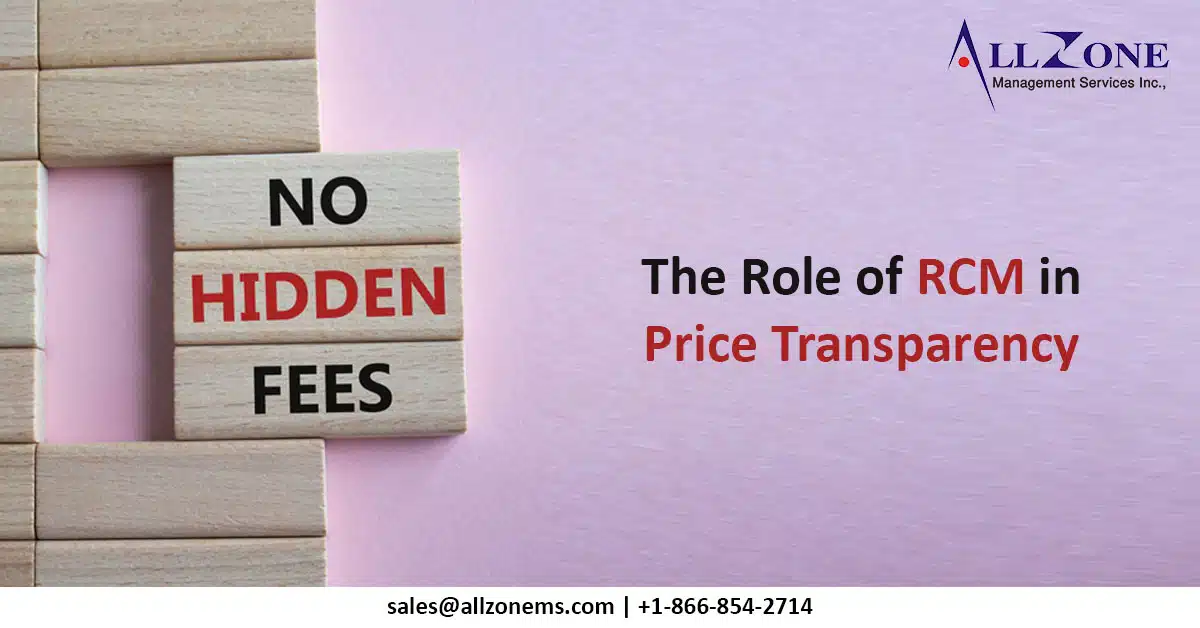The healthcare industry has traditionally been a black box when it comes to pricing. Patients, providers, and payers alike have often struggled to understand the complex web of costs associated with medical services. However, a seismic shift is underway. The advent of price transparency regulations and the evolving role of Revenue Cycle Management (RCM) are ushering in a new era of clarity and efficiency. This article delves into the profound impact of price transparency on the healthcare landscape and how RCM is adapting to meet the challenges and opportunities of this transformative period.
Understanding Price Transparency
Price transparency in healthcare refers to the disclosure of healthcare costs and charges to patients and other stakeholders. This includes information about services, procedures, and medications, along with their associated prices. The driving force behind this movement is a growing consumer demand for transparency and control over healthcare expenses.
-
- Regulatory Mandates: Governments have recognized the need for price transparency and have implemented regulations to compel healthcare providers to disclose pricing information. These regulations vary in scope and stringency across different jurisdictions, but they all aim to empower consumers with information.
- Consumer Empowerment: Armed with price information, patients can make more informed decisions about their healthcare choices. They can compare costs across providers, negotiate prices, and select the options that best suit their needs and budgets.
- Industry Response: Healthcare providers and payers are adapting to the price transparency landscape by developing strategies to comply with regulations and leverage the available data. This includes creating user-friendly price estimation tools, providing clear explanations of charges, and implementing pricing strategies that align with consumer expectations.
The Role of RCM in the Price Transparency Era
Revenue Cycle Management (RCM) is the process of managing administrative and financial aspects of healthcare delivery. It encompasses a wide range of activities, including patient registration, insurance verification, claims submission, and payment collection. In the age of price transparency, RCM takes on an even more critical role.
-
- Data Management and Analysis: RCM teams must effectively manage and analyze vast amounts of price-related data. This includes collecting, organizing, and interpreting information about contracted rates, payer reimbursement, and patient financial obligations. By harnessing this data, RCM departments can identify opportunities for cost reduction, revenue enhancement, and improved patient financial experience.
- Price Estimation and Communication: Accurate and transparent price estimation is essential for patient satisfaction and financial viability. RCM teams collaborate with pricing departments to develop tools and processes for providing patients with clear and understandable cost estimates. Effective communication of these estimates is crucial to building trust and mitigating financial surprises.
- Patient Financial Engagement: Price transparency places a greater emphasis on patient financial responsibility. RCM teams must develop strategies to engage patients in the financial aspects of their care. This includes providing clear explanations of billing statements, offering payment plans, and implementing patient financial counseling programs.
- Payer contracting and Negotiation: RCM professionals play a pivotal role in negotiating contracts with payers. In the era of price transparency, understanding payer reimbursement rates and contract terms is more important than ever. RCM teams can leverage price transparency data to strengthen their negotiating positions and optimize revenue.
- Compliance and Risk Management: Navigating the complex landscape of price transparency regulations requires robust compliance and risk management practices. RCM teams must stay updated on regulatory requirements, implement effective compliance programs, and mitigate the risks associated with non-compliance.
Challenges and Opportunities
The transition to price transparency presents both challenges and opportunities for healthcare organizations.
-
- Data Challenges: Collecting, organizing, and analyzing price-related data can be complex and time-consuming. RCM teams need to invest in data management systems and analytical tools to effectively leverage this information.
- Patient Financial Responsibility: Increased patient financial responsibility can lead to higher patient balances and increased collection efforts. RCM teams must implement strategies to mitigate financial hardship and improve patient satisfaction.
- Competitive Pressure: Price transparency can intensify competition among healthcare providers. RCM teams need to develop pricing strategies that differentiate their organizations while maintaining financial viability.
- Opportunity for Revenue Enhancement: By effectively managing price-related data and improving patient financial engagement, RCM teams can identify opportunities to enhance revenue and reduce costs.
- Enhanced Patient Satisfaction: Transparent pricing and improved patient financial experience can lead to increased patient satisfaction and loyalty.

